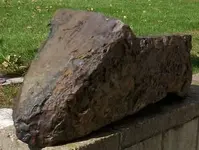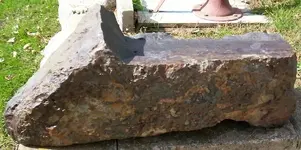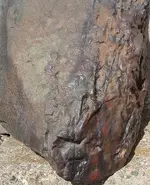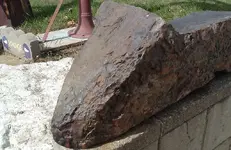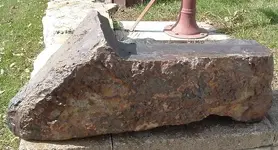Wish I could agree with TerryC. I'm not so certain.
If the stone has iron in it, test with a magnet first. If magnetic, then next strike it with a hammer. If you get a ringing sound like you've just struck a bell, it might be.
Broken portion does not look metallic, but might have broken off while just above the earth a mile or two, and not have enough air time to form regmaglympts. Or, might have been broken after it hit the earth. In either case, another important test would be to use a carbon-steel file, and file a small cm-squared window into the rock, and examine under a hand lens. Might still be something esoteric, like a carbonaceous chondrite, even if it didn't have any metal per se.
Another suggestion? Try using a stiff nylon brush, as for kitchen scrubbing or car scrubbing (not steel wool, please). See if the surface near the cone, after vigorous brushing, doesn't produce something resembling a fusion crust. If you don't know what a fusion crust is, check for it on-line.
All of these are just suggestions. Even if all proven correct (i.e. magnetic, rings like a bell, regmaglympts near cone, other colored interior after filing, different colored interior than exterior, fusion crust) it still needs to be examined by a meteoritical scientist, and they are pretty hard to get to see.
Keep in mind that even the "experts" are sometimes wrong. Identification of meteorites is no longer a cut-and-dried process.
Good Luck!



